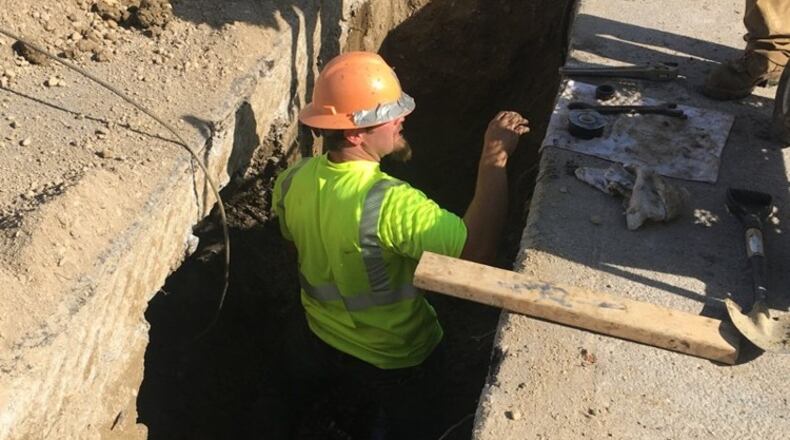» UNMATCHED COVERAGE: Partial pipe replacements may be tainting drinking water
A document released today also states there is some evidence that when lead service lines are disturbed during water line work, lead may be released into the drinking water — “potentially reaching the consumer’s tap.”
Public water systems regularly conduct partial lead service line replacements, when utility-owned service lines under the streets are replaced but the lines that property owners use to bring water into their buildings are not replaced. Under federal law, cities and municipalities are required to replace the utility-owned part of the service lines . Property owners are responsible for the lines on their property.
» RELATED: Lead scare at Miami Valley traced to construction project
Some researchers say lead levels in the water can spike for a little while after a partial service line replacement. The increase can range from days to months and potentially longer. While the Ohio EPA is still guiding public water systems on partial service line replacements, the guidance document clearly outlines the benefits of a full-service line replacement.
It’s an issue that has impacted the Miami Valley in recent years. In 2016, high levels of lead contaminated part of Miami Valley Hospital’s water supply for a short amount of time. Hospital officials concluded from their own investigation that a short-term road construction project on Warren and Brown streets near the hospital likely disturbed the sediment within the water lines.
A major feed line for water to the hospital was part of the construction work on Warren and Brown streets and once the hospital switched from this source there were no further issues with lead, Miami Valley officials said.
The Dayton Daily News is reviewing new guidelines and legislation to explain how it will impact infrastructure and water quality in the Miami Valley.
About the Author
